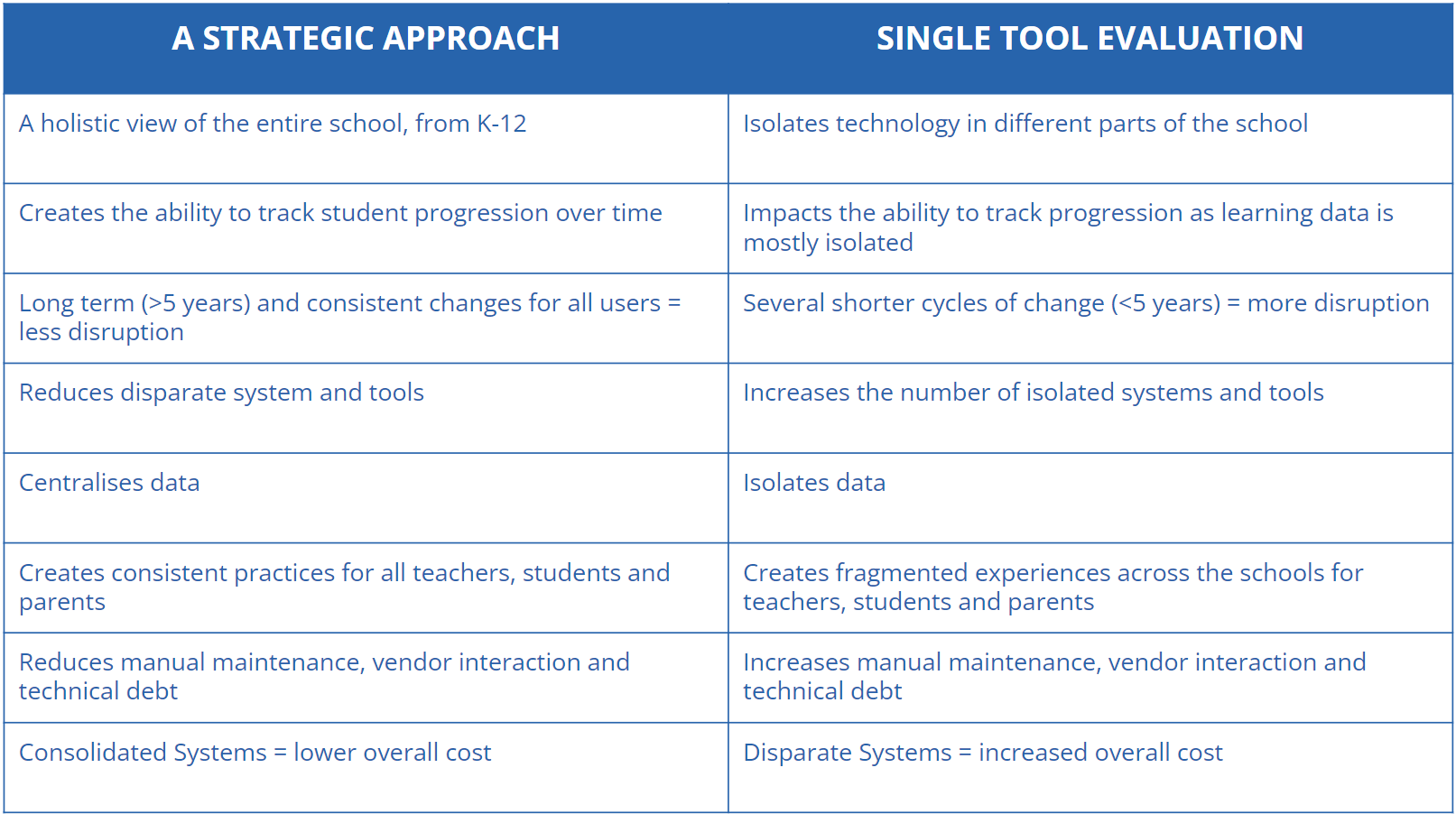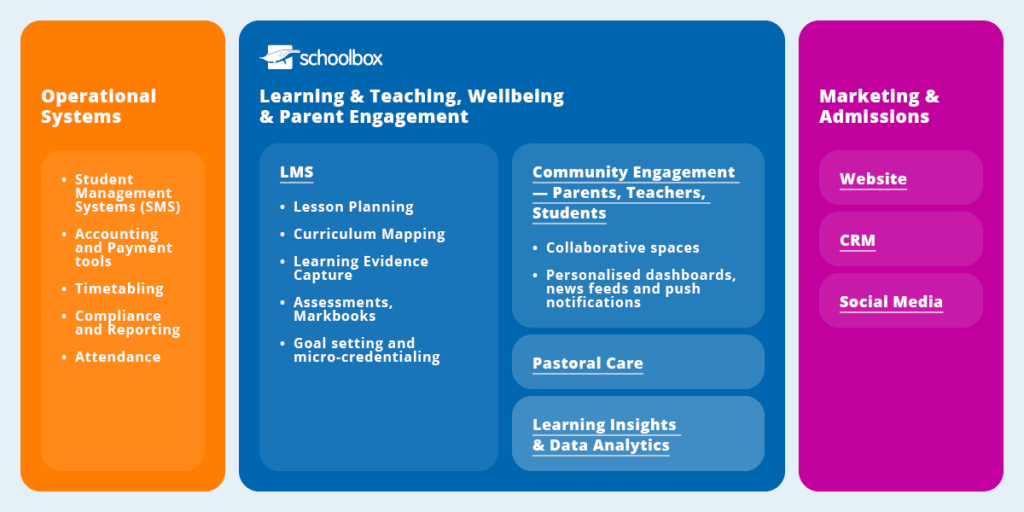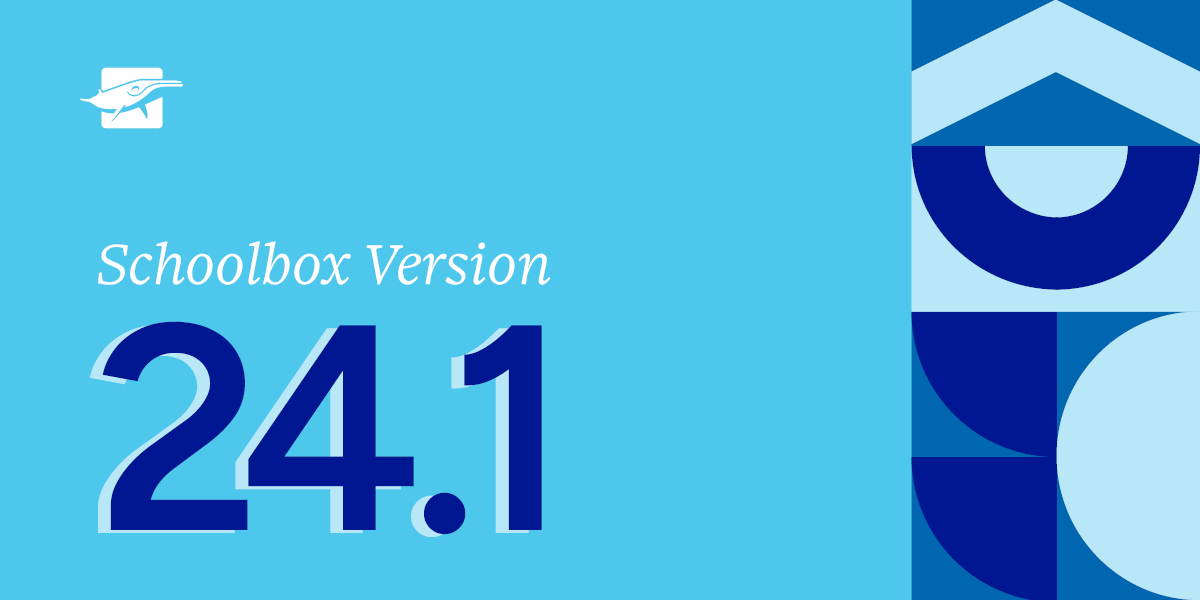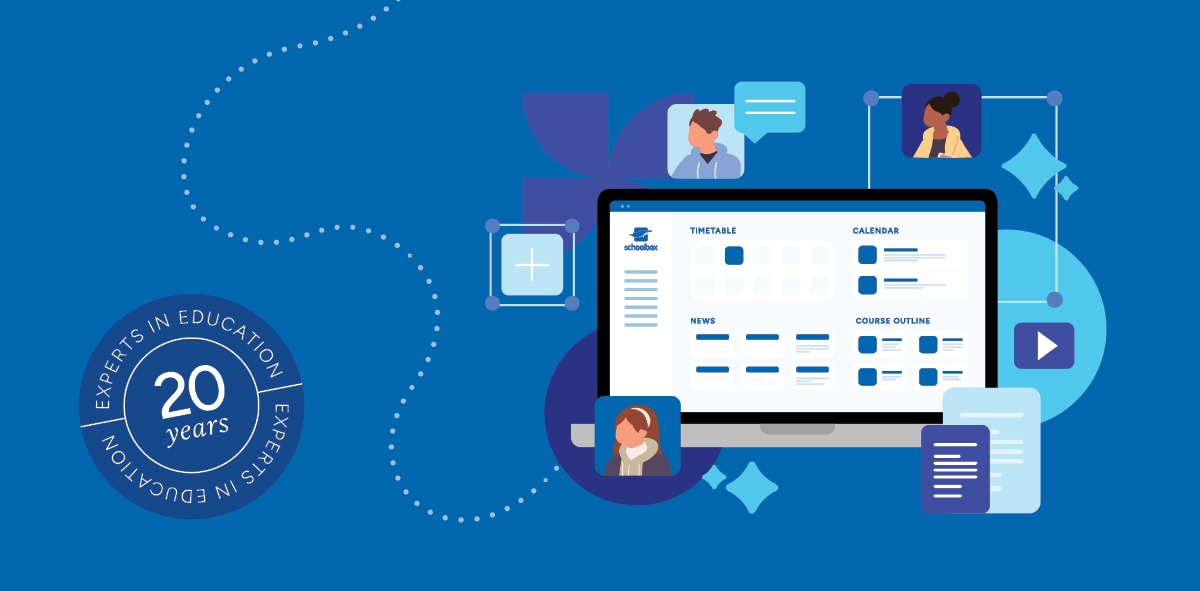With a sudden shift to remote learning, many schools across the world were caught off guard without adequate and integrated technology solutions to support the changing needs of their community.
Out of necessity schools became reactive, with many turning to solutions like Google Classroom as an ‘emergency remote learning response’.
International Education Solutions (IES), with the support of Schoolbox, iSams, and Digistorm, reached out to school leaders in International Schools to see how they were tracking.
From our research we identified:
- 38.2% of schools use multiple routes to communicate with parents, with 4.5% of schools admitting they still solely rely on email for communication.
- 31.8% of schools indicated using multiple solutions, having anywhere up to 4 LMS tools in use across the school.
With some of the key challenges being:
- The number of different systems used across a school causes confusion for staff, students, and parents.
- A lack of integration between systems meaning that data flow and user experience is disjointed and unintuitive.
- The focus for technology is not on learning and teaching, making it challenging to implement changes in approach to learning.
- Difficulty ensuring professional development and upskilling for teaching staff using the technology.
What are innovative groups doing to combat these challenges?
We sat down with Schoolbox CEO Grant van der Kruk to talk about how innovative International Schools are responding to the challenges.
“We are seeing two clear approaches to educational technology emerging across International Schools — those taking a strategic approach to technology solutions, and those assessing the multitude of tools individually.”
A Strategic Pathway
Many top tier International Schools are maturing rapidly in this space, with a common approach emerging; technology is now becoming a major focus in the strategic planning with a wider holistic aproach.
Many Schools and School Groups are making a conscious decision to employ a Director of Technology who has a seat on their School Executive Team. The Director of Technology has a mandate to review, investigate, and redesign the school’s digital learning environment. Technology is becoming a rapidly growing area of their strategies, better positioning schools to facilitate its overall strategic plan. This is executed in partnership with the other executive members, to help make longer term, structural decisions on which platforms and tools they should and should not adopt, and why.

Two Approaches to Technology Decision Making
Single Tool Evaluation
Not all schools have stopped to re-evaluate their needs after being forced to react during Covid, and instead of assessing technology holistically, these schools are replacing and evaluating individual tools in isolation.
The schools that are replacing tools with similar tools, or adopting tools to ‘plug gaps’ in their ecosystem, do not seem to have a strategic technology voice on their Executive Team. In this approach, decisions on adoption of technology platforms and tools are often the responsibility of educational leaders within each campus or section of a school.
Technology choices are mostly based on what they have used previously, with a reduced understanding of the impact to the wider ecosystem of technology. Unfortunately, this creates more change for Teachers, Students, and Parents.
Can you paint a picture of a consolidated system?
This is an interesting question, with the number of different tools available to schools it can be really difficult to evaluate the requirements. Educational leaders are trained in education, not in strategic building of technology ecosystems, data models, system integrations or user experience, so it is a big ask to put the responsibility of technology on a Principal’s shoulders.
When I discuss this with Principals and Ed Leaders they are often surprised at the opportunities that can be opened up with a consolidated system like Schoolbox. The simplest way to look at an Ed-Tech Stack is to think about the different functionality.

A platform like Schoolbox can support learning and teaching needs within a school, from traditional LMS functions like lesson planning, markbooks and assessment, to collaborative spaces, community engagement and even data analytics and wellbeing information. This allows the school to look at the whole student, tracking progression from their first year all the way through their schooling, in one platform.
Think about how many systems you have across all parts of the school that sit within the learning and teaching area — have you got a consistent approach leveraging the same systems from K–12? How many different tools do your teachers use each day?
Find out more about consolidating your ed-tech stack here.





